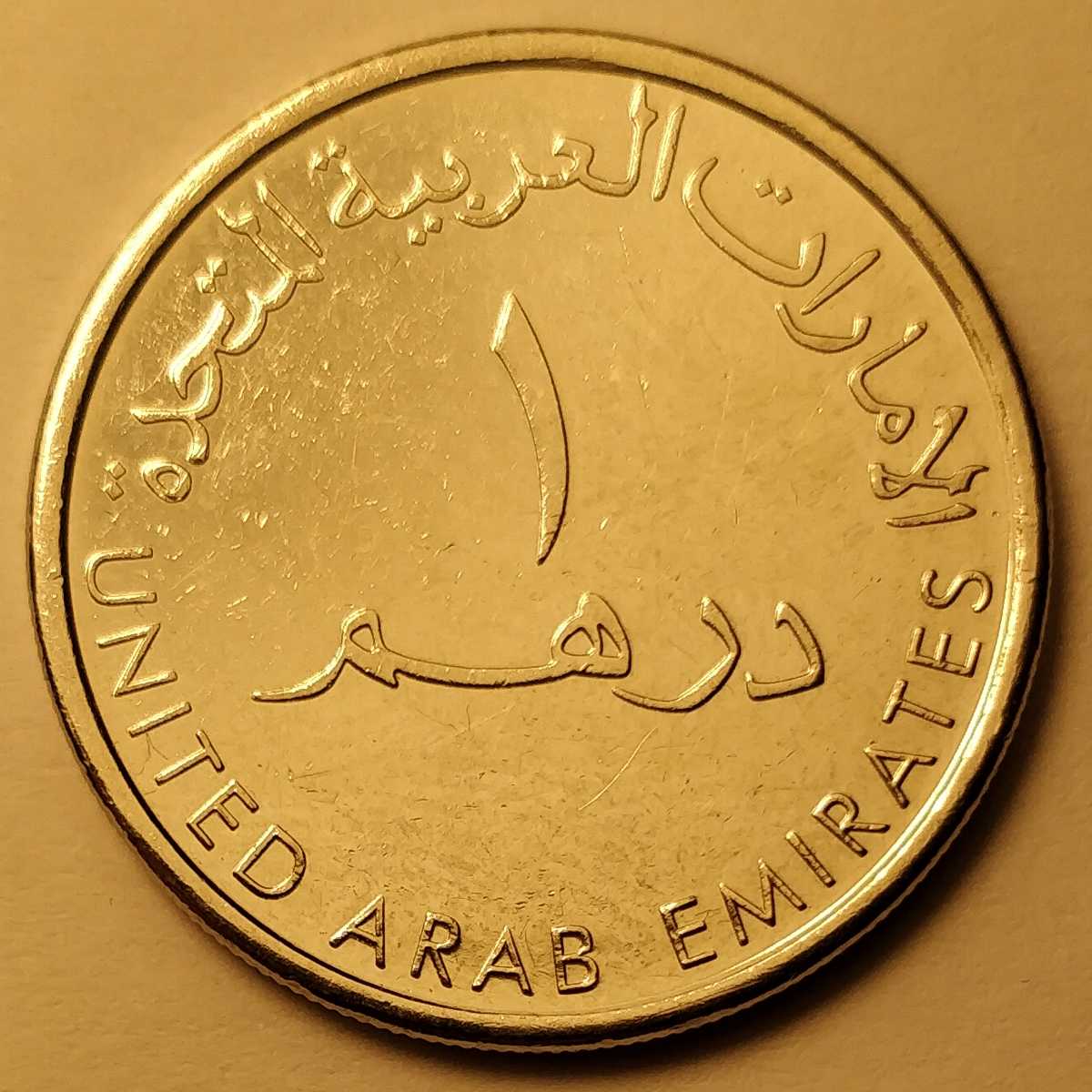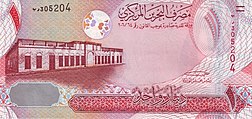
Bahraini dinar
| Bahraini dinar | |
|---|---|
| دينار بحريني (Arabic) | |
 | |
| ISO 4217 | |
| Code | BHD |
| Denominations | |
| Subunit | |
| 1⁄1000 | fils |
| Symbol | .د.ب (Arabic) or BD (Latin) |
| Banknotes | BD 1⁄2, BD 1, BD 5, BD 10, BD 20 |
| Coins | 5, 10, 25, 50, 100, BD 1⁄2 (500 fils) |
| Demographics | |
| User(s) |  Bahrain Bahrain |
| Issuance | |
| Monetary authority | Central Bank of Bahrain |
| Website | www.cbb.gov.bh |
| Valuation | |
| Inflation | 1,4% |
| Source | The World Factbook, 2017 est. |
| Pegged with | U.S. dollar (USD) $1 USD = 0.376 BD |
The dinar (Arabic: دينار Dīnār Baḥrēnī) (sign: .د.ب or BD; code: BHD) is the currency of Bahrain. It is divided into 1000 fils (فلس). The Bahraini dinar is abbreviated د.ب (Arabic) or BD (Latin). It is usually represented with three decimal places denoting the fils.
The name dinar derives from the Roman denarius.
History[edit]
The Bahraini dinar was introduced in 1965, replacing the Gulf rupee at a rate of 10 rupees = 1 dinar. The dinar was worth 15 shillings sterling upon introduction. Bahraini coins and notes were introduced at that time.
Initially, Abu Dhabi adopted the Bahraini dinar but changed to the United Arab Emirates dirham in 1973.
Exchange rate[edit]
In December 1980, the dinar was officially pegged to the IMF's special drawing rights (SDRs). In practice, it is fixed at $1 USD = 0.376 BHD, which translates to approximately 1 BHD = $2.65957 USD[1] and, consequently, almost 10 Saudi Arabian riyals. This rate was made official in 2001 and Saudi riyals are accepted in Bahrain at any point of sale, with the exception of the Saudi 500 riyal note which is only accepted in major supermarkets, airports and electronic shops.
Before Malta's adoption of the euro on 1 January 2008, it was the third-highest-valued currency unit after the Kuwaiti dinar and Maltese lira. After Malta adopted the euro, the dinar became the second highest-valued currency unit.
Note: Rates obtained from these websites may contradict with pegged rate mentioned above
Coins[edit]
In 1965, coins were introduced in denominations of 1, 5, 10, 25, 50 and 100 fils. The 1, 5 and 10 fils were struck in bronze, with the others in cupro-nickel. The 1 fils coin was not produced after 1966 and no longer circulates. A bimetallic 100 fils coin was introduced in October 1992.[2] In 1992, brass replaced bronze in the 5 and 10 fils.
A bimetallic 500 fils coin was released in 2000[3] with the Pearl Monument on the obverse. The coin was discontinued in response to the uprising in Bahrain, which resulted in the demolition of the monument on 18 March 2011, although the Bank stated that minting had ceased some time prior to that. The coin remained in use but was no longer released back into circulation after reaching banks.[4]


For a wider history surrounding currency in the region, see The History of British Currency in the Middle East.
Banknotes[edit]
On October 16, 1965, the Bahrain Currency Board introduced notes in denominations of 1⁄4, 1⁄2, 1, 5 and 10 dinars; a 100-fils note was introduced on September 2, 1967.[6]
In 1973, the Bahrain Monetary Agency took over the issuance of paper money, and starting in July 1978 with a 20 dinar note, it introduced a new family of notes dated 1973 in Arabic. Denominations of 1⁄2, 1, 5 and 10 dinars were released on 16 December 1979. The 100-fils note of the Bahrain Currency Board was withdrawn in November 1980 and the remainder of the notes were withdrawn on 31 March 1996, remaining exchangeable until one year afterwards.[2]
The third issue of notes (the second by the Bahrain Monetary Agency) with the same denominations of 1⁄2 to 20 dinars was released in March 1993.[7] This series was upgraded during 1998 with various modifications to colour and security features. However, a fake order for banknotes had recently been placed with the Argentinian printer Ciccone Calcografica who did not verify it with the legitimate authorities in Bahrain and obtained genuine banknote paper from Arjo Wiggins to print over 7 million unauthorised replicas of the 20-dinar note (of the 1993 design), equivalent to US$365 million.[8] These differed from genuine notes in two respects: different background shading to the Arabic name of the Bahrain Monetary Agency, and a large gap between the two Arabic letters in the horizontal serial number.[9]
The unauthorised notes were smuggled through various African and European countries by air and presented for exchange in Belgium, Switzerland and the Gulf around June 1998, just as the upgraded 20-dinar note was being released in Bahrain. The large amounts raised suspicions and were soon detected as notes that had not been printed by the authorised printer, De La Rue. The Bahrain Monetary Agency allowed individuals who had mistakenly accepted the unauthorised notes to exchange them for face value at banks between 8-14 June 1998, then quickly recalled all 20-dinar notes on 30 July 1998. The unauthorised notes, being replicas of the 1993 design, were in purple and without a hologram. Despite this the upgraded notes, also in purple but with a hologram, that had been released in June 1998 were also withdrawn. On 1 August 1998 a new 20-dinar note, of the same design as the upgraded note (with a hologram) but in peach colour, was released. Thus, the genuine June 1998 design was only in circulation for about 7 weeks and is therefore rarely seen by collectors.[10] All other banknotes of the Bahrain Monetary Agency remain exchangeable.
On 7 September 2006,[6] the Bahrain Monetary Agency was renamed the Central Bank of Bahrain. On 17 March 2008, the Central Bank of Bahrain introduced its first series of notes (Bahrain's 4th series) reflecting the country's heritage as well as its modern development.
On 4 September 2016, the Central Bank of Bahrain introduced upgraded versions of the 10- and 20-dinar notes with enhanced security features (SPARK and Motion thread) and tactile lines added at center right front for the visually impaired.[11][12]
-